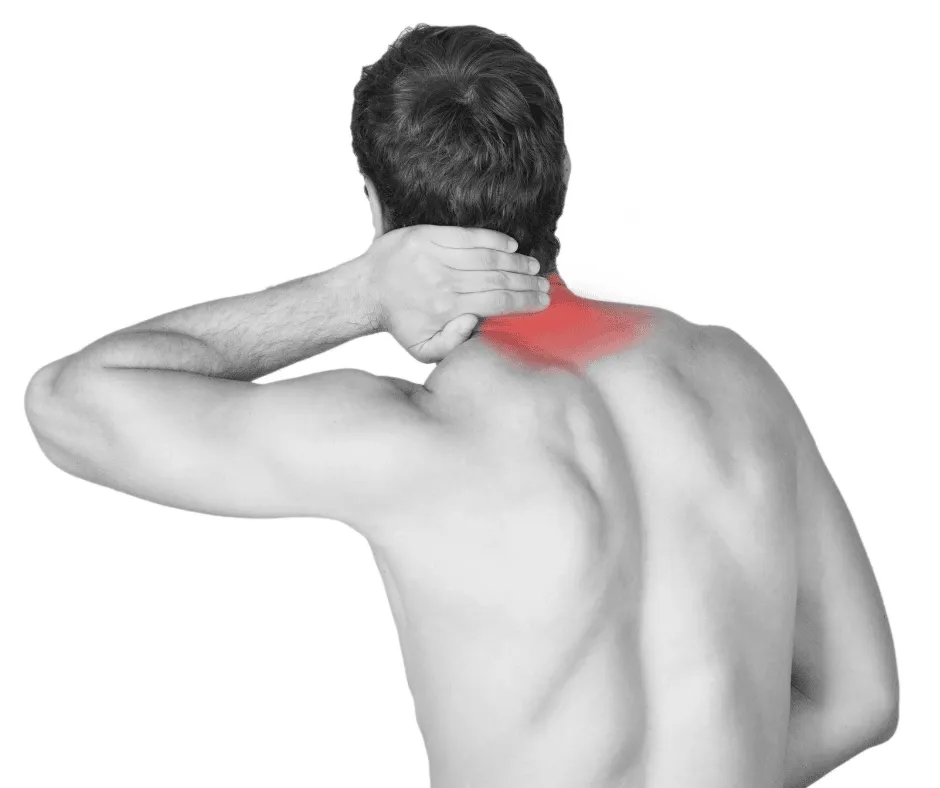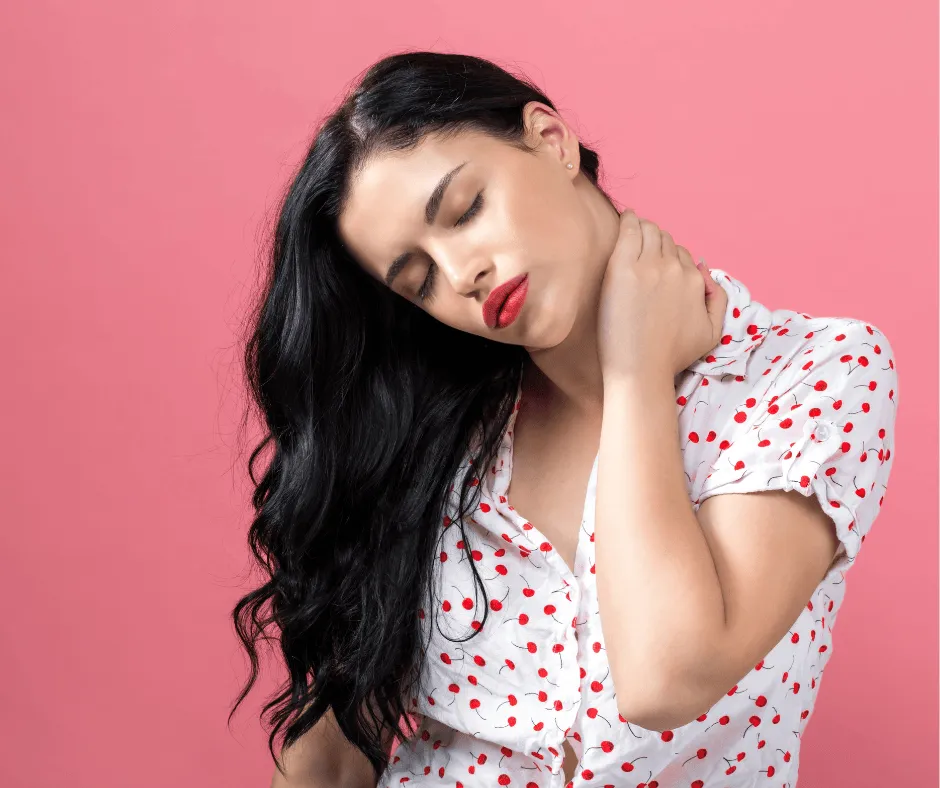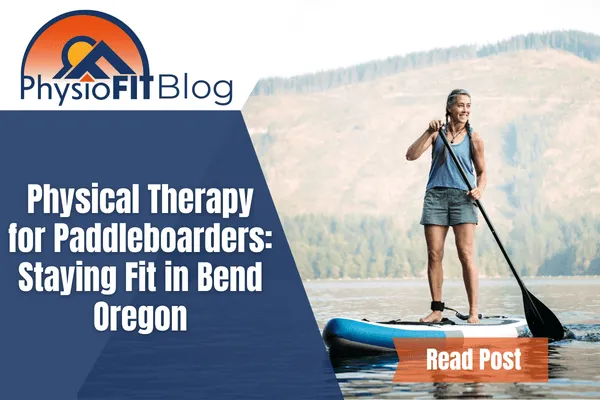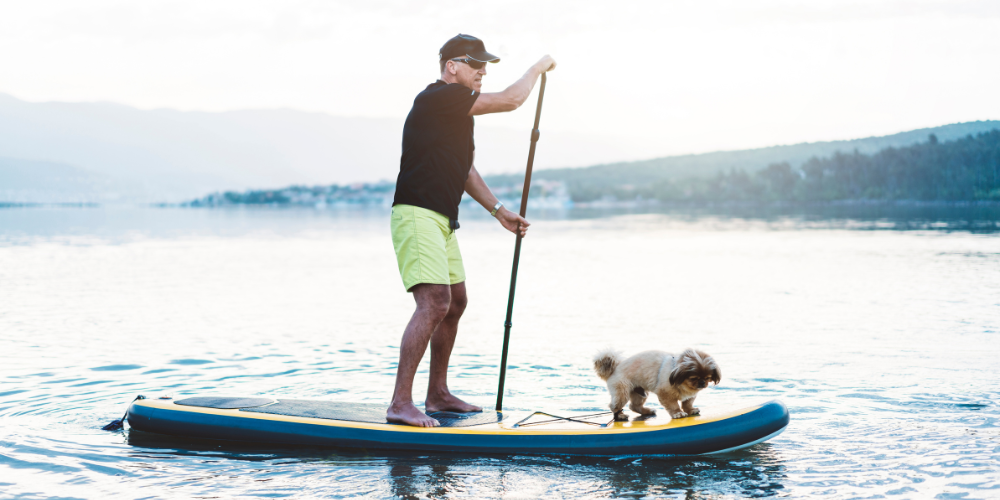Neck Pain Relief
Living Life Shouldn't Be Such a Pain in the Neck
Are you one among the millions experiencing "neck pain" and seeking relief? Neck pain is an everyday battle for roughly 10-20% of U.S. adults, leading to work absences, diminished life quality, and restricted physical activities. Consider us your guide, providing essential knowledge about neck pain and illustrating how we can assist you in restoring your well-being.
At PhysioFit, we are committed to delivering well-rounded neck pain treatments, expertly designed to align with every patient's specific condition and requirements. Our practice is rooted in a science-based, exercise-centric methodology of physical therapy, centered around individualized care plans for pain relief. Our vision transcends the mere alleviation of your neck discomfort; we strive to enhance your holistic health, diminish the chance of chronic or recurrent pain, and expedite your return to your routine activities.
What You Should Know
The most frequent injury resulting from car accidents is neck pain, accounting for nearly half, or 49%, of all vehicular injury cases.
Persistent neck pain may cause an array of complications, including depression, tension in relationships, anxiety, issues at work, hindrance in day-to-day tasks, and excessive tiredness.
Neck discomfort ranks third as a source of chronic pain.
A proper diagnosis of a neck problem involves a thorough evaluation from a professional.

The Most Common Causes of Neck Pain
Neck pain, a common complaint that can arise from various sources, often disturbs the delicate balance of daily life. Whether it's the natural aging process, physical strain, mental stress, traumatic injury, abnormal growths, or an underlying health condition, the origin of neck pain can be multifaceted. Understanding these potential causes is a crucial step towards effective treatment and relief.
Neck discomfort can be attributed to several factors:
Age-related Deterioration: Aging can lead to natural wear and tear of the cervical spine, leading to degenerative conditions like osteoarthritis or spinal stenosis, which can provoke neck pain. Persistent stress and repeated movements can weaken spinal disks, potentially causing a herniated disk or a pinched nerve.
Physical Exertion: Repetitive or strenuous activities can overstrain neck muscles, resulting in stiffness and pain. Factors like poor posture, weak abdominal muscles, and excess body weight can misalign the spine, contributing to neck discomfort. Long hours spent in front of a computer, straining the neck, is a common contributor to neck pain.
Psychological Stress: Stress-induced muscle tightening can lead to neck stiffness and pain. Many individuals may unconsciously tense their neck muscles during periods of stress or agitation, only realizing it when the neck begins to hurt.
Injury: Trauma can damage muscles, ligaments, disks, vertebral joints, and nerve roots in the spinal cord, causing neck pain. Whiplash, a common neck injury resulting from car accidents, often leads to neck discomfort.
Abnormal Growths: Tumors, cysts, and bone spurs can exert pressure on neck nerves, inducing pain.
Underlying Health Conditions: Certain health conditions, including meningitis, rheumatoid arthritis, and cancer, may present neck pain as a symptom.
If any of this information resonates with your current situation, we urge you to schedule an appointment with us immediately. Don't let hip pain diminish your life quality - allow us to help you embark on the path to relief today.
Strategies for Negating Neck Pain
Strategies can be implemented to mitigate neck discomfort related to muscle strain or tension. They are as follows:
Adopt Healthy Posture Habits: Arrange your devices such as computers and phones to prevent neck strain or slouching while using them. Ensure your shoulders are aligned, your back is straight while seated, and your neck isn't strained. Fine-tune your car seats for proper posture during transit.
Optimize Your Sleeping Position: Retain good posture even during sleep. Use a pillow for head support to align your head and neck with your body if you sleep on your side or back. For back sleepers, consider placing a pillow under your knees to lessen lower back pressure. Avoid stomach sleeping with a turned head.
Stay Mobile: Utilize exercises meant for neck pain relief to also prevent it. If your job requires prolonged sitting, incorporate occasional breaks for stretching and mobilizing, including neck muscles.
Avoid Shoulder-Borne Heavy Loads: Refrain from carrying substantial weights like book bags or suitcases on your shoulder. Opt for wheeled luggage or bags instead.
Strengthen Your Upper Back Extensor Muscles: Age-related weakening of the upper back is normal, causing the shoulders to stoop and the head to tilt forward. This posture puts extra strain on your neck and upper back.

Common Symptoms of Neck Pain
Experiencing headaches
Sensation of numbness or a tingling feeling, akin to 'pins and needles', in your shoulders or arms.
Inability to rotate the neck or incline the head
Rigidity in the neck, shoulder, and upper back regions
A radiating pain extending from the neck down to the shoulders or arms
An intense sensation of stabbing or burning
A continuous, nagging discomfort
Remember, if you resonate with any of the symptoms or conditions mentioned, we highly recommend making an appointment with us for a thorough evaluation and personalized treatment plan.
Please Note: The information provided on our website is intended for general education and is not a substitute for professional medical advice. Each individual's situation and body is different. Therefore, what may work for one person may not work for another. We care about your well-being and advise you to reach out to us to discuss your specific needs before implementing any advice from our website.
Your Source for All Things Physical Therapy in Bend Oregon
The PhysioBlog

Physical Therapy for Paddleboarders: Staying Fit in Bend Oregon
Understanding Paddle Boarding and Physical Therapy
Please Note:The information provided on our website is intended for general education and is not a substitute for professional medical advice. Each individual's situation and body are different. Therefore, what may work for one person may not work for another. We care about your well-being and advise you to reach out to us to discuss your specific needs before implementing any advice from our website.
Introduction
Paddle boarding on the Deschutes River is a popular pastime for many outdoor enthusiasts. This activity not only offers an opportunity to enjoy the scenic beauty of the river but also provides a full-body workout. However, to fully enjoy this sport, it's crucial to stay fit and maintain good physical health. This is where physical therapy comes into play. Physical therapy plays a vital role in maintaining and improving fitness levels, making it an essential part of a paddle boarder's routine.
Paddleboarding is a sport that requires strength, balance, and endurance. It engages the entire body, from the core muscles used for balance to the arm and shoulder muscles used for paddling. As such, staying fit is crucial for paddleboarders. Regular exercise, proper nutrition, and adequate rest are all important aspects of fitness. However, one aspect that is often overlooked is the role of physical therapy.
Physical therapy, also known as physiotherapy, is a healthcare profession dedicated to improving and maintaining physical function and performance. It involves the use of various techniques, including exercises, manual therapy, and education, to treat and prevent injuries and improve physical abilities. For paddleboarders, physical therapy can help improve strength, flexibility, and balance, reduce the risk of injuries, and enhance performance.

The Sport of Paddleboarding
Paddleboarding has a rich history and has gained significant popularity over the years. It's a versatile sport that can be enjoyed in various water bodies, from calm lakes to flowing rivers like the Deschutes. The health benefits of paddleboarding are numerous. It improves balance, strengthens the core, and provides a low-impact cardio workout. However, like any sport, paddleboarding comes with its share of physical challenges and potential injuries. Common issues include strains, sprains, and classic overuse injuries, particularly in the shoulders due to the repetitive paddling motion.
Paddleboarding is believed to have originated in Hawaii, where it was known as Hoe he'e nalu. It has since spread across the world and has become a popular sport and recreational activity. Today, paddleboarding is enjoyed by people of all ages and fitness levels. It's a great way to enjoy the outdoors, get a full-body workout, and have fun.
One of the main reasons for the popularity of paddleboarding is the health benefits it offers. Paddleboarding is a full-body workout that engages all the major muscle groups. It strengthens the core, improves balance, increases endurance, and provides a low-impact cardio workout. Moreover, being out on the water and in nature can also have positive effects on mental health, reducing stress and improving mood.
However, paddleboarding is not without its challenges. The sport requires a good level of physical fitness and can be physically demanding. Common injuries in paddleboarding include muscle strains and sprains, particularly in the shoulders, back, and knees. These injuries often result from overuse, poor technique, or inadequate physical conditioning.
The Role of Physical Therapy in Paddleboarding
Physical therapy can play a significant role in helping paddleboarders prevent and recover from these injuries. It involves the use of various techniques to improve strength, flexibility, and balance, and to promote healing and recovery.
Preventive physical therapy focuses on strengthening the body and improving technique to prevent injuries. This might involve exercises to strengthen the core and shoulder muscles, improve balance, and enhance paddling technique. For example, a physical therapist might recommend exercises that truly strengthen the core, rotator cuff for shoulder health, and balance exercises to keep you on your board.
Reactive physical therapy, on the other hand, involves treating existing injuries. This might involve manual therapy techniques to reduce pain and inflammation,exercises to promote healing and restore function, and education on modifying activity and technique to prevent re-injury.
Physical therapy can be a valuable resource for paddleboarders. By improving physical fitness and technique, and by treating and preventing injuries, physical therapy can help paddleboarders enjoy their sport safely and effectively.
Overuse Injuries in Paddleboarding
Overuse injuries are particularly common in paddleboarding. These injuries occur when a particular body part is subjected to repeated stress over time, leading to damage and inflammation. In paddleboarding, the shoulders are particularly at risk due to the repetitive motion of paddling.
Overuse injuries can result in pain, reduced mobility, and impaired performance. If left untreated, they can lead to more serious problems like chronic pain and disability. Therefore, it's important to address overuse injuries promptly and effectively.
Physical therapy can play a key role in the management of overuse injuries in paddleboarding. A physical therapist can provide treatments to reduce pain and inflammation, prescribe exercises to strengthen the affected area and restore function, and provide advice on modifying activity and technique to prevent re-injury.
For example, in the case of a shoulder overuse injury, a physical therapist might use manual therapy techniques like massage and mobilization to reduce pain and inflammation, prescribe exercises to strengthen the shoulder muscles and restore mobility, and provide advice on proper paddling technique to reduce stress on the shoulder.
For more detailed information on training for paddleboarding, you can refer to thiscomprehensive guide by REI Co-op. For a real-life experience of paddleboarding on the Deschutes River, check out thisarticle by Oregon Live.

Physical Therapy Techniques for Paddleboarders
Physical therapy offers a range of techniques and exercises specifically designed to target the common problem areas for paddleboarders. These exercises focus on strengthening the core, improving balance, and enhancing the endurance of the upper body, particularly the shoulders.
Core strengthening exercises are crucial for paddleboarders as a strong core improves balance and stability on the board. Exercises, while not a comprehensive list, could include planks, bridges, and loaded carries.
Balance exercises are also important as they help paddleboarders maintain their stability on the board. These might include training on unsteady surfaces, heel-to-toe walk, as well as board specific exercises.
Upper body and shoulder strengthening exercises are vital due to the repetitive paddling motion in paddleboarding. These exercises can help prevent overuse injuries in the shoulders.
It's important to note that these exercises should be performed under the guidance of a qualified physical therapist in bend to ensure correct technique and prevent injuries. A physical therapist can provide a customized exercise program based on the individual's fitness level, goals, and any existing injuries or conditions. If you’d like to explore this more or would like to schedule a time with a physical therapist, contact us at PhysioFITBend.com
FAQs
What are the benefits of paddleboarding? Paddleboarding is a full-body workout that improves balance, strengthens the core, and provides a low-impact cardio workout. It also offers mental health benefits by reducing stress and improving mood.
How can physical therapy help paddleboarders? Physical therapy can help paddleboarders improve strength, flexibility, and balance, reduce the risk of injuries, and enhance performance. It can also aid in the recovery from injuries. Contact us at PhysioFITBend.com for help.
What are some common injuries in paddleboarding? The most common injuries in paddleboarding are muscle strains, sprains, and overuse injuries, particularly in the shoulders due to the repetitive paddling motion.
What is the difference between preventive and reactive physical therapy? Preventive physical therapy focuses on strengthening the body and improving technique to prevent injuries, while reactive physical therapy involves treating existing injuries.
What are some physical therapy exercises for paddleboarders? Physical therapy exercises for paddleboarders include core strengthening exercises like planks and bridges, balance exercises like standing on one leg, and upper body and shoulder strengthening exercises like rotator cuff exercises and shoulder press.
Conclusion
In conclusion, physical therapy plays a crucial role in paddleboarding, particularly for those who enjoy the sport in Bend, Oregon. It not only helps in preventing common injuries but also aids in improving overall performance. Whether you're a seasoned paddleboarder or a beginner, incorporating physical therapy into your fitness regimen can significantly enhance your paddleboarding experience. So, take the plunge and consider physical therapy as an integral part of your paddleboarding journey. It's an investment in your health that will pay off in the long run. Happy paddleboarding!
Please Note: It's important to note that any exercises that are shared should be performed under the guidance of a qualified physical therapist in bend to ensure correct technique and to prevent injuries. A physical therapist can provide a customized exercise program based on the individual's fitness level, goals, and any existing injuries or conditions. If you’d like to explore this more or would like to schedule a time with a physical therapist, contact us at PhysioFITBend.com
Copyright PhysioFIT 2025 . All rights reserved


